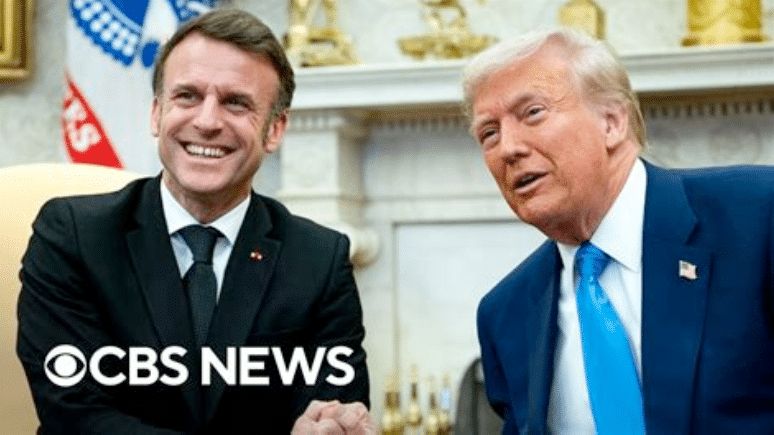I think Trump is sincere in wanting to broker a peace deal with Russia, but I do not think he has grasped the fact that Russia has no desire to end the war with Ukraine until it is defeated, along with NATO, or the United States accepts the conditions President Putin presented last June. Europe is a different matter entirely. The European Union bureaucrats and the leaders of France, Germany and the UK want to keep the war going.
Russian Deputy Foreign Minister, Sergei Rybakov, provided a pithy definition of the Russian position:
All I’m seeing the U.S. do to appease Russia in the short term is repealing completely pointless resolutions, empty gestures and good faith promises.
We’ve seen this before and until something concrete happens from the U.S. side I’ll remain pessimistic.
By the time you read this, the second meeting between the United States and Russian delegations will be underway in Saudi Arabia. The Russian plan is already on the table. We have to wait to see what the Trump team is proposing.
I hope the Russians understand that Donald Trump’s views towards Russia reflect a minority view in the United States. Most of the Republican and Democrat politicians, as well as the majority of intelligence and defense officers, see no difference between the Russia that exists today and the Soviet Union. Today, for example, a friend shared an email with me that he received from his buddy, a recently retired CIA case officer who is still doing contract work for the Agency. I am an acquaintance of that former CIA officer. In the email he voiced outrage at Trump “cozying up” to Putin and exclaimed: “I’ve spent forty years fighting those bastards and Trump is surrendering.”
The US foreign policy establishment is like a prehistoric bug frozen in amber. They are trapped in the past. They have a fixed image of Russia as an authoritarian communist dictatorship and cannot accept the reality that modern Russia has reverted to its nationalist, Christian roots.
The foreign policy mavens in the US labor under the delusion that the United States has some leverage over Russia. They fail to understand that Russia does not need a damn thing from the United States. The same cannot be said for the US, which relies on Russia’s ability to supply fertilizer and some enriched uranium.
Despite all the tough talk from Washington about sanctioning Russia, the United States continues to import significant amounts of fertilizer from Russia. In 2023, the U.S. imported $1.62 billion worth of fertilizers from Russia, making it the third-largest destination for Russian fertilizer exports8. This represents a substantial portion of the U.S. fertilizer import market.
More recent data from 2024 shows:
- In March 2024, American companies spent $174 million on fertilizers imported from Russia, a 10% increase from February of the same year1.
- Russian fertilizers accounted for 17.1% of all fertilizers imported into the United States, up from 9.7% a year earlier1.
- For the first 11 months of 2024, fertilizers were the most-imported commodity to the U.S. from Russia, with a value of almost one billion U.S. dollars3.
The imports include various types of fertilizers:
- Potash fertilizers: $95.5 million in March 2024
- Nitrogen-containing fertilizers: $75.3 million in March 2024
- Phosphorous fertilizers: $3.1 million in March 20241
While the U.S. does not impose direct sanctions on Russian fertilizer, this practice has been criticized as potentially funding Russia’s war efforts2. Despite these concerns, the import of Russian fertilizers continues to play a significant role in the U.S. agricultural sector.
Uranium is a different story. According to recent data, the United States imports relatively little uranium ore directly from Russia. In 2022, Russia accounted for about 12% of U.S. uranium purchases6. Russia plays a more significant role in other parts of the nuclear fuel supply chain, particularly in uranium enrichment.
The United States is totally dependent on uranium imports. The supply comes from the following countries:
- Canada: 27%
- Kazakhstan: 25%
- Russia: 12%
- Uzbekistan: 11%
- Australia: 9%
- Other countries: 16%6
In 2023, U.S. nuclear generators used 32 million pounds of imported uranium concentrate (U3O8), with only 0.05 million pounds coming from domestic production5. This means that imports accounted for 99% of the U3O8 used in 2023 to make nuclear fuel5.
While Russia’s direct uranium ore exports to the U.S. are relatively small, Russia has a significant impact on the global nuclear fuel market due to its large uranium enrichment capacity. Russia accounts for approximately 44% of the world’s uranium enrichment capacity and supplies about 35% of U.S. imports for nuclear fuel4.
In May 2024, the United States enacted a ban on imports of uranium products from Russia, which took effect in August 2024. 5 This ban is expected to significantly alter the U.S. nuclear fuel supply chain in the coming years.
Trump’s hopes of crafting a deal with Russia may be sabotaged by the petulance and belligerence of the Europeans. Here is Ursula Fond of Lying speaking in Kiev:
Most of the leaders in Europe are keen on keeping the war going. Yet, they lack the economic and military muscle to back up their bold proclamations. These clowns do not realize that Europe is no longer a relevant player on the world stage. Russia understands this, which is why it is focused on talking to Donald Trump. Without Washington’s continued support, Ukraine’s ability to sustain the war will be crippled.
There was some interesting political theater in Washington today surrounding the visit of French President Macron. Trump sent him a subtle, but direct message. Watch the video:
Did you catch it? When Macron first arrived he was greeted by a White House staffer. Macron got the message and asked President Trump for a proper photo op. Trump complied, but he had put Macron on notice.
Reprinted with permission from Sonar21.

